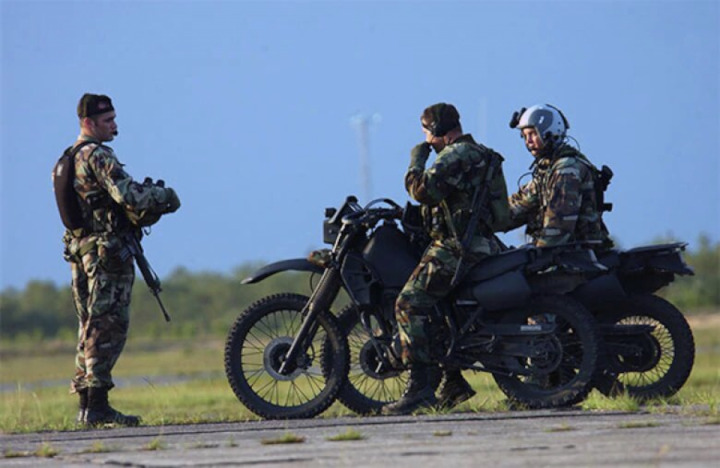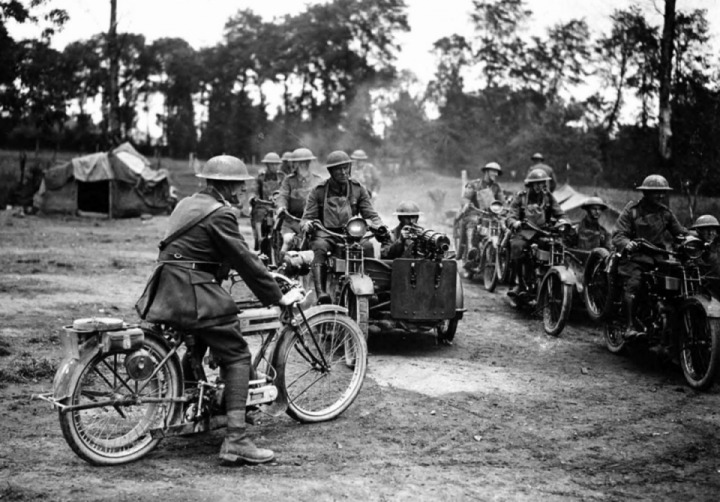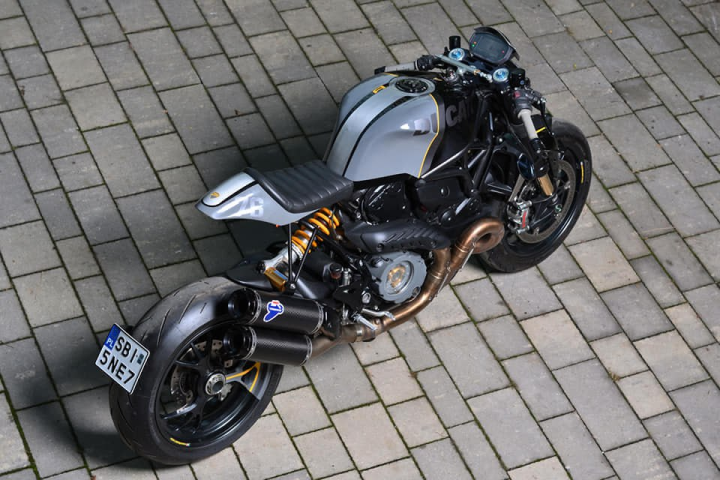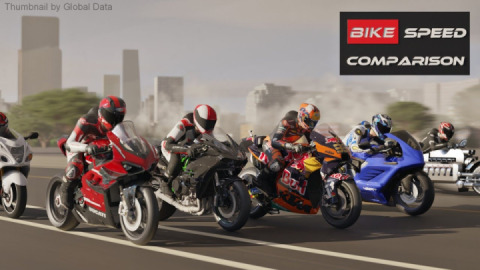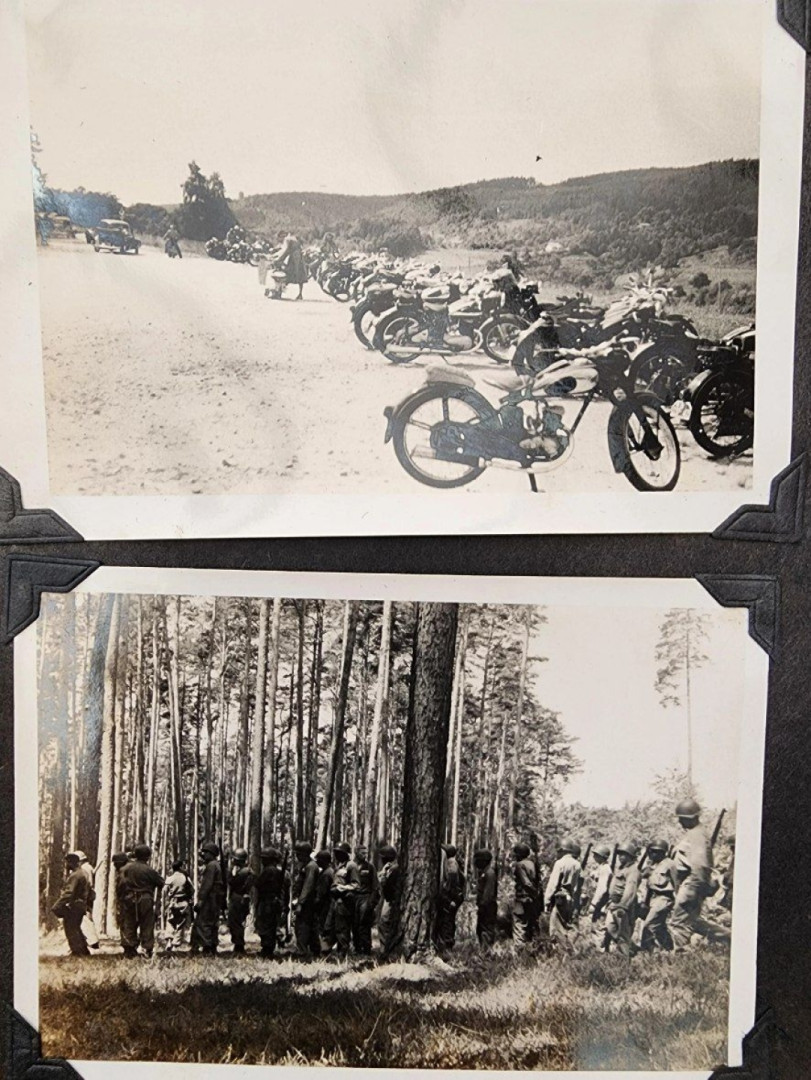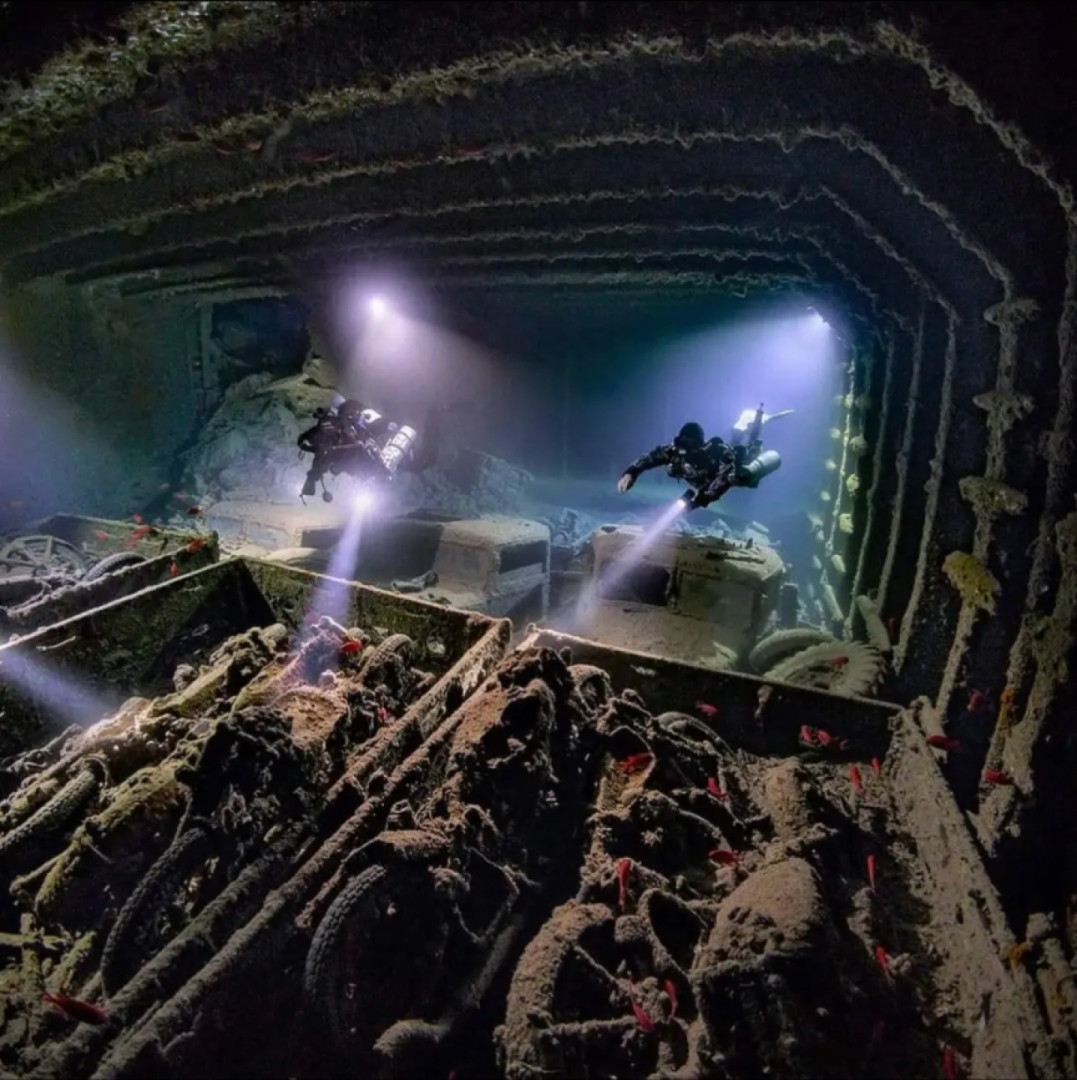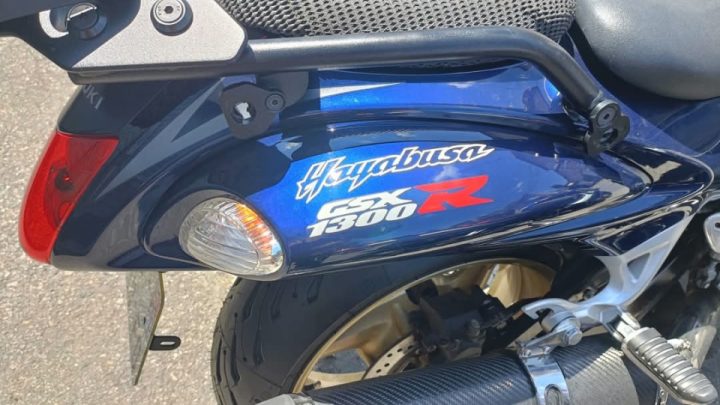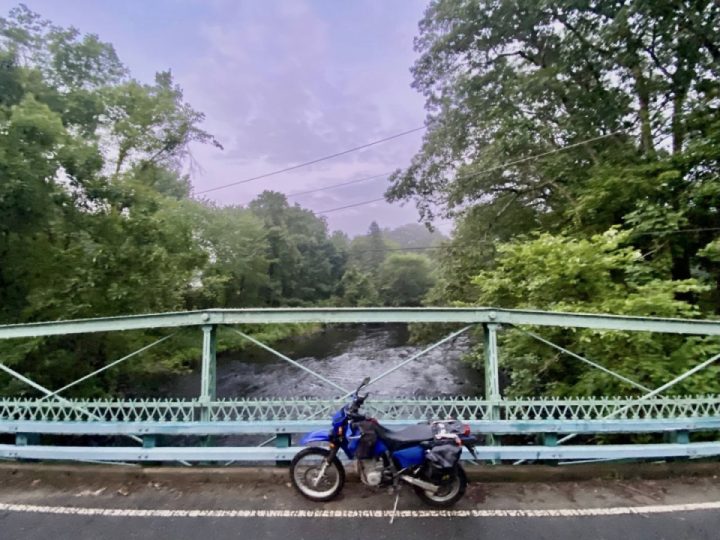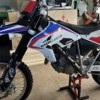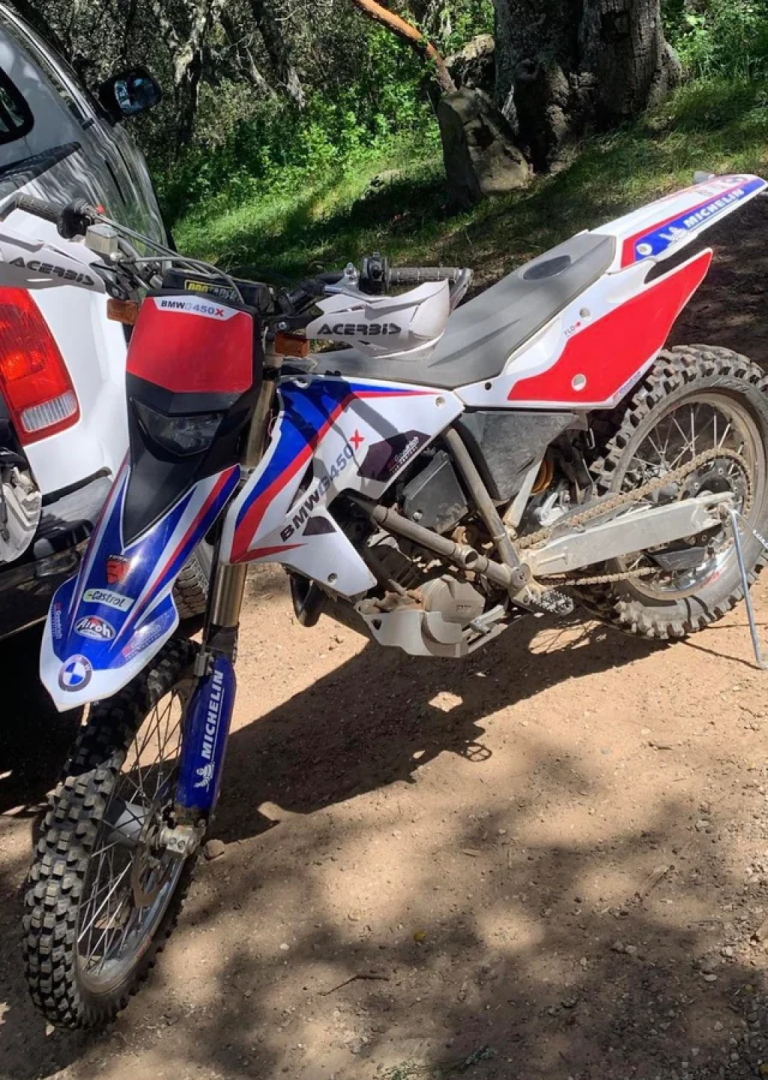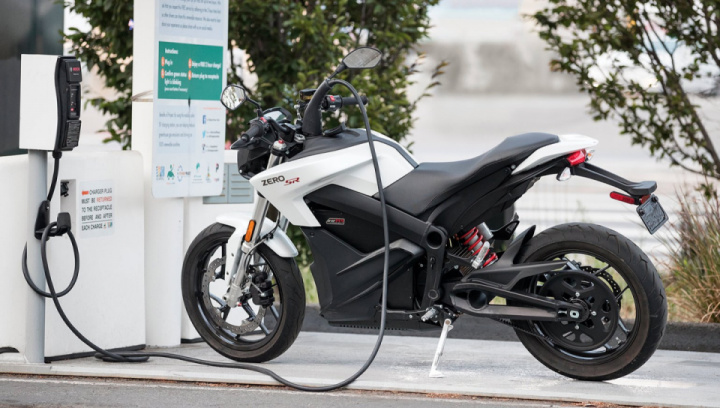Unusual tracked motorcycles
BMW Schneekrad – 1936
Schneekrad translates to snowmobile. This is not quite what one expects from a sled, but from the images, it seems it functioned about the same.
One straddled the seat like a horse of bike, turning the handlebars to traverse snowy tundras.
BMW built this creation from an R12, a production bike which ran from ’36 to ’42. Although they never broke past the prototype for the Schneekrad, they did make a sidecar for it.
Mercier Type 3 – 1937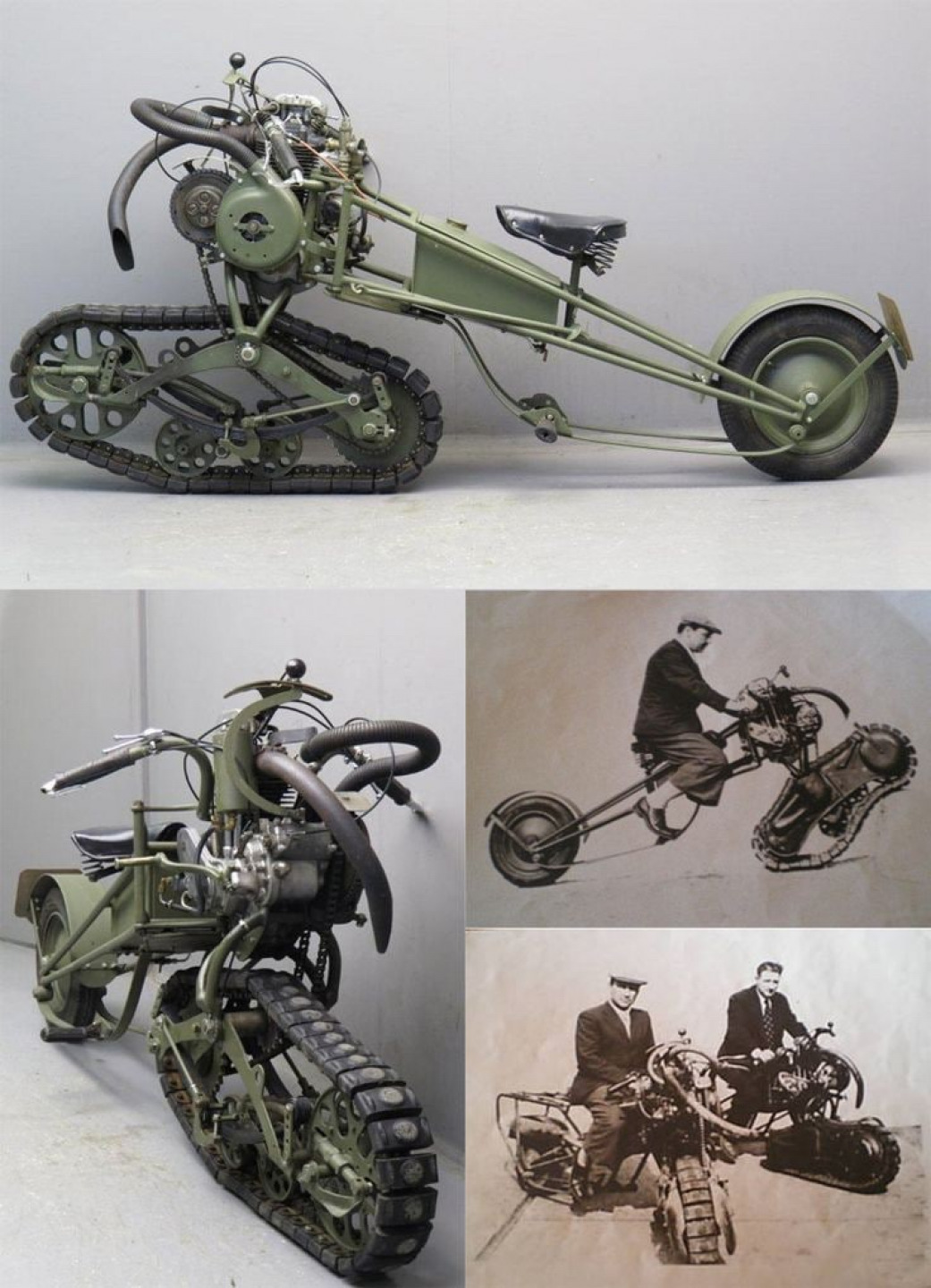
The French Army tested a track motorcycle for a hot minute, the brainchild of Adrien Mercier.
He was Swiss by birth but living in the suburbs of Paris in Bois-Colombes, so French by residence.
The engine for the Type 3 was a 350 cc engine, cranking 11 horsepower. The original design warranted three prototypes, but they built more, enough that one can still find them on Ebay from time to time.
Tractor Cycle – 1938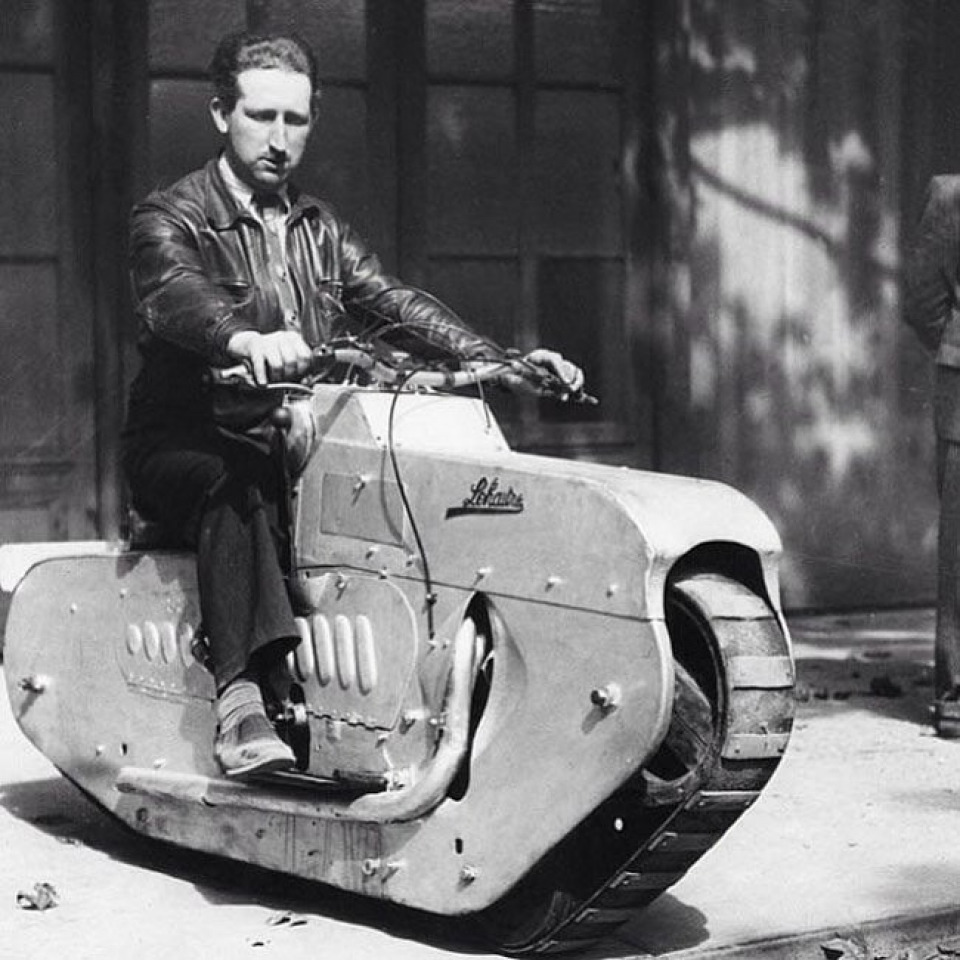
This beast appeared in the February 1938 edition of Modern Mechanix magazine. It made the cover art for that month but was barely a footnote about the prototype.
In the article they describe the bizarre bike as such, “invented by J. Lehaitre, of Paris, France, it features a tractor-type drive belt as its means of locomotion in place of conventional wheels.”
The tractor-cycle only went 25 mph, but it could travel over more varied terrain a motorcycle, especially when it came to climbing. Steering, one accomplished by turning the handlebars, which moved the belt sideways.
Kleines Kettenkrad HK101 – 1940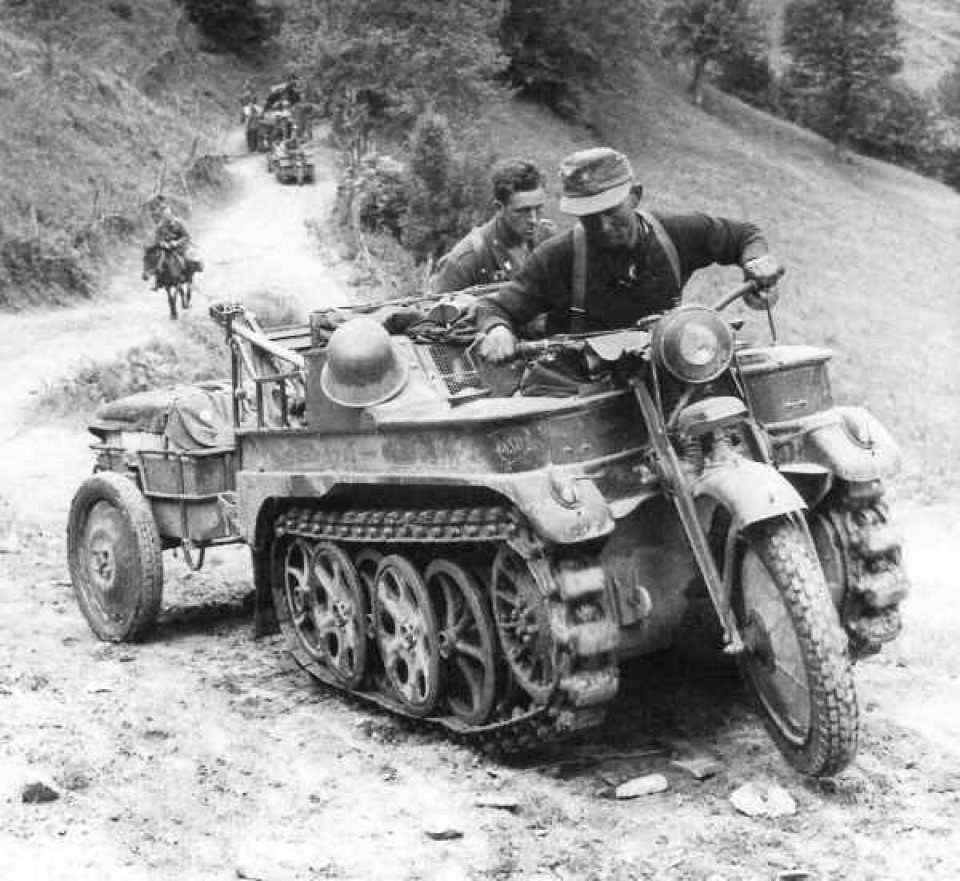
This one looks more like a tank than a bike. Other than the front end steering, it was a tank.
The Kettenkrad could wail compared to previous designs, able to go 44 mph. It could also carry two passengers, not something one would be able to do on a standard motorcycle.
Uniquely designed, the Kettenkrad had two methods of turning, the front fork, and by cranking the tracks in opposite directions like a tank. That allowed the Kettenkrad to turn more sharply.
Further proof that it was barely a bike, the manufacturer’s recommended removing the front wheel in heavy rain for better operation. Why have it at all?
The Germans used these quite a bit, despite the heavy maintenance required to keep them operational. They produced almost 9,000 of them in the years leading up to 1951.
Hamster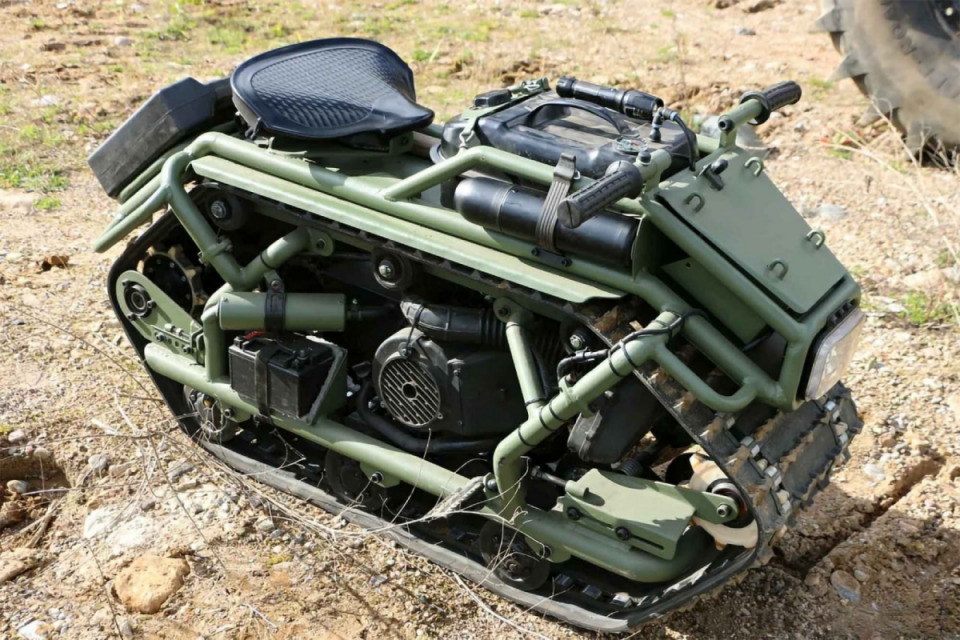
Well, here’s another – also a motorcycle – from the Motherland Russia and boy, am I impressed (and smitten, I guess?) yet again by the Russian’s ingenuity when it comes to off-roading.
For a ride this tiny, 40+ km/h is fast and you will most definitely feel the speed in its entirety due to the lack of suspension. Apparently, the recommended “optimal” speed is 20 km/h (12 mph).
Tuscan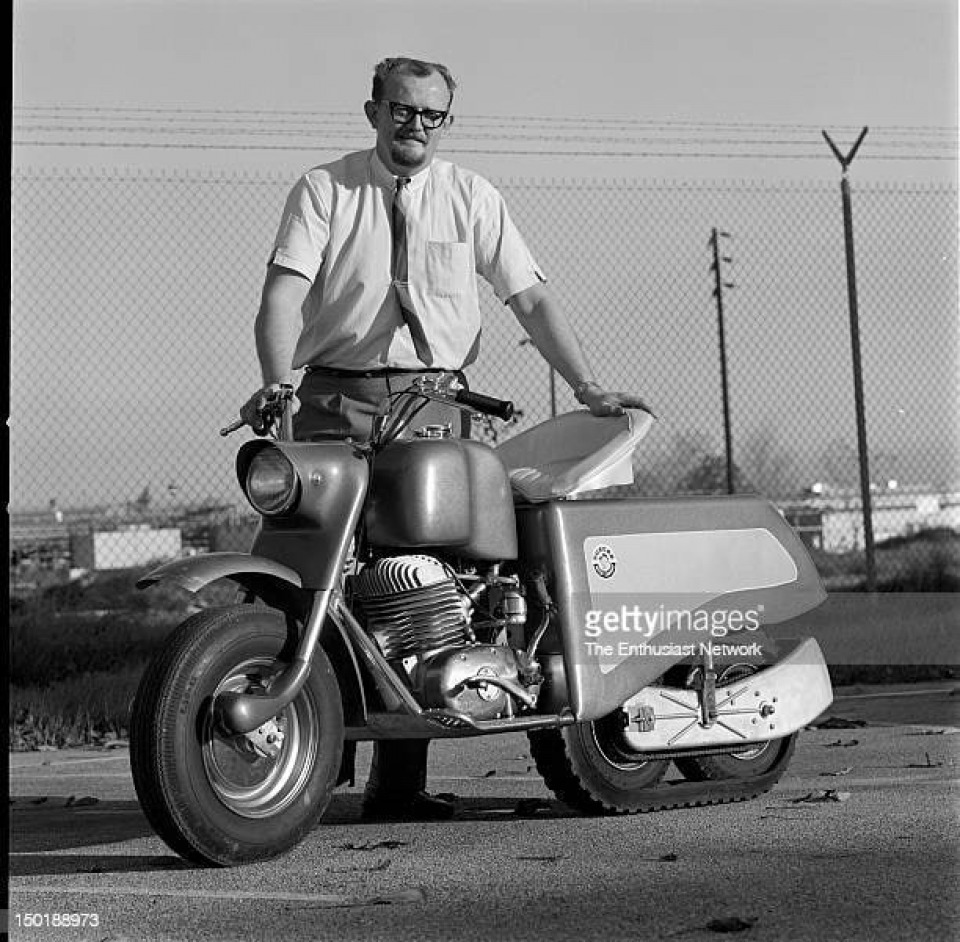
American Tuscan was produced at Salt Lake City, Utah in 1967. Its 20 hp engine could up 45° slopes said the designers. Skis could be fitted at front. This nice Tuscan, commissioned by US Forest Service for the rangers remained a prototype.
The Ant
Tracked motorcycle 'The Ant', homemade, from Russia. For snow 25 cm depth, payload : the driver + 30 kg + 80 kg on a trailer, mass 110 kg. Font tire sidewall are bolted on the rim and filled with foam. Rear track is 2 nylon bands bolted on steel cables. Grouser are U steel sheets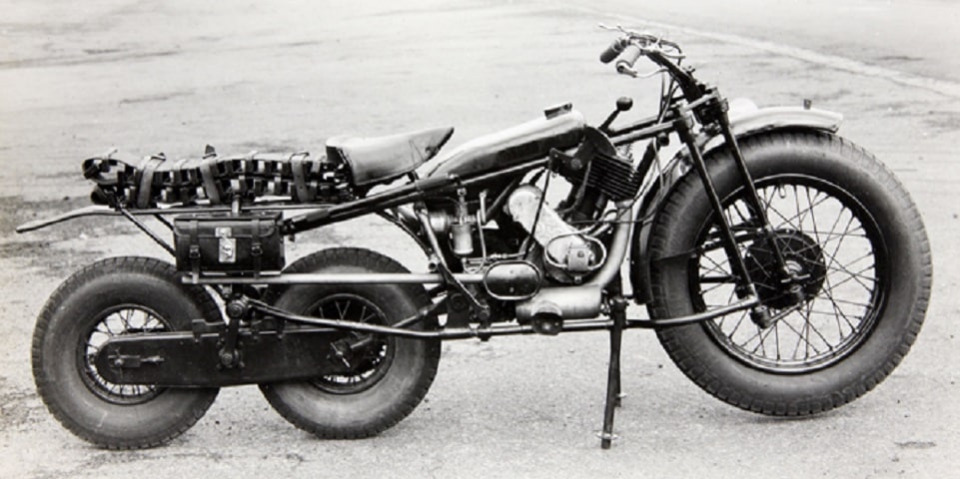
OEC (Osborn Engineering Co., Gasport, Hants, GB). Tracked Motorcycle Prototype, 1928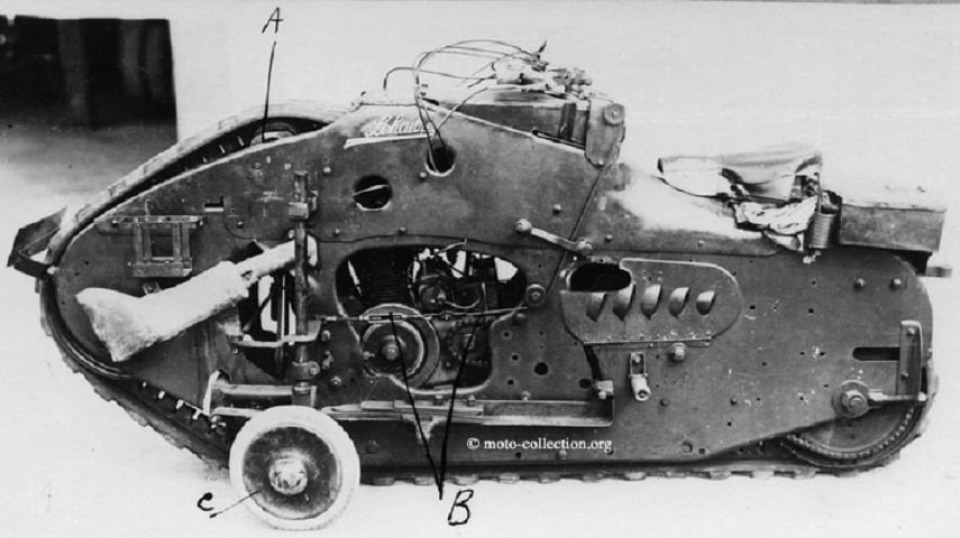
Moto-chenille Lehaître in 1938 whose 2 little additional wheels were not easy in off-road conditions. Steering was a problem.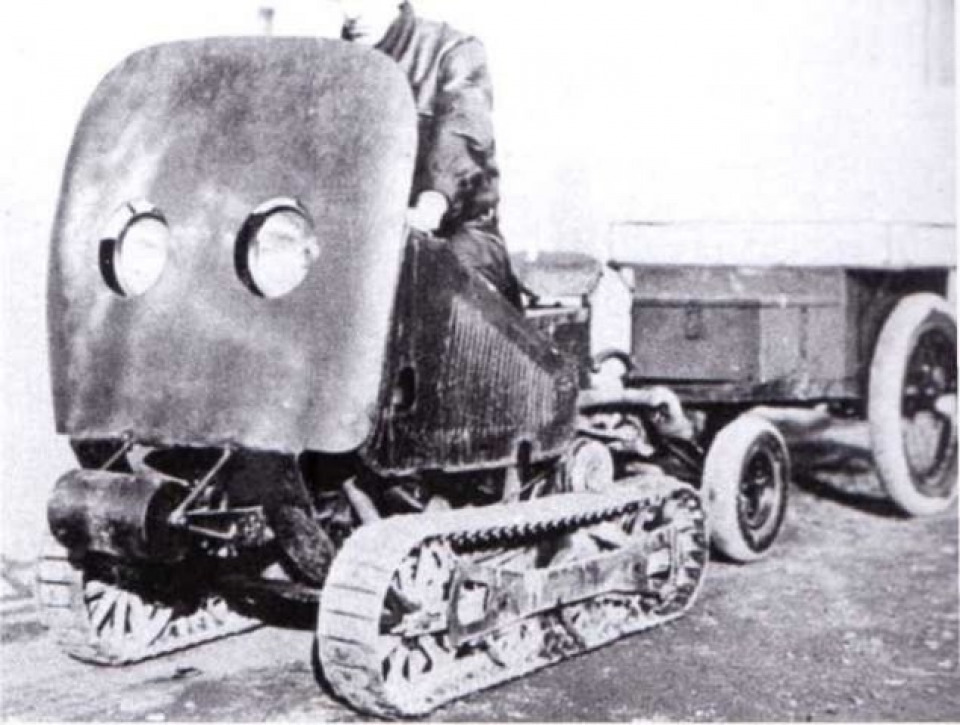
Moto-chenille Courtot in 1935 had 2 tracks and rear wheels were ride control. Off-road capabilities were not better than a classic motorcycle and consumption was 12 times higher.
 Follow
9.7K
Follow
9.7K


